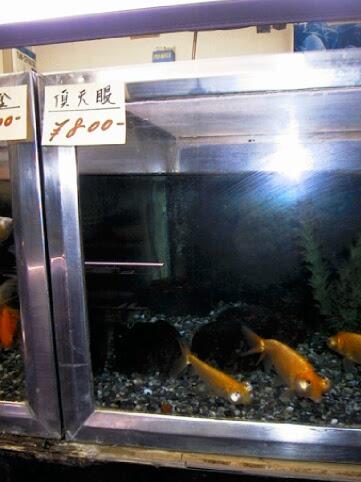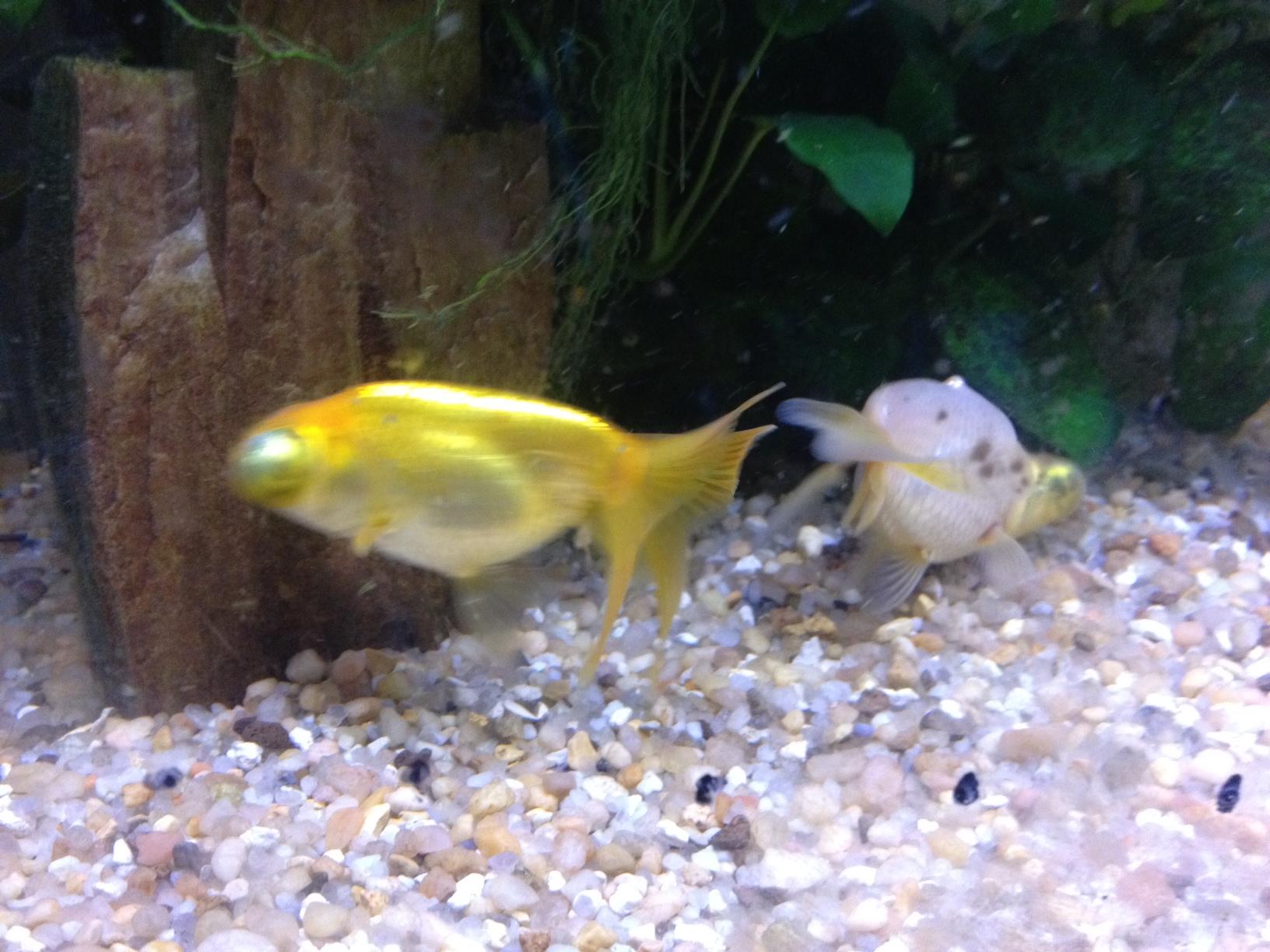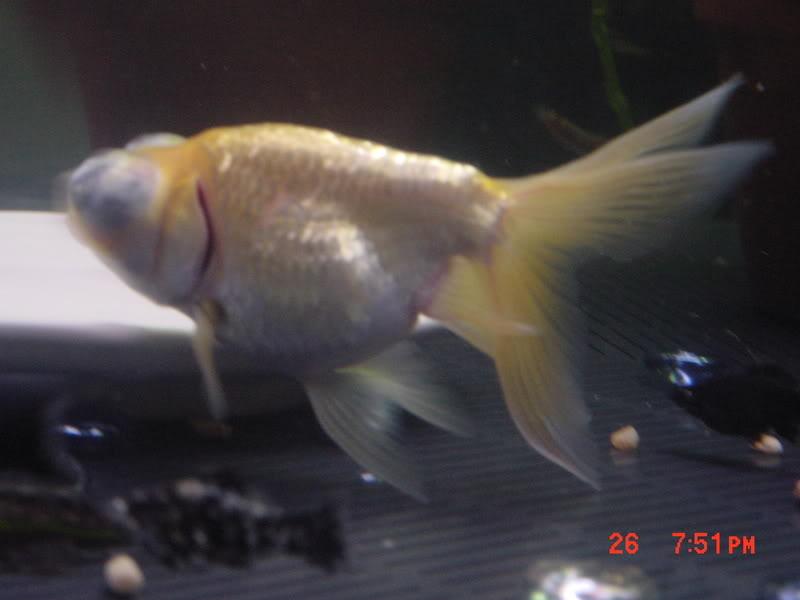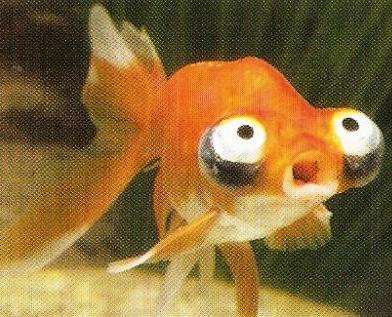Goldfish Culling - Celestials page 2 / 6
William T. Innes wrote in 1935 that it was his opinion that of all the goldfish varieties it was the most difficult to find a good pair of Celestials. No argument here. Perhaps this is due to the fact that Celestials have never attracted the kind of serious attention on the part of breeders as other varieties have, at least not since the early 1900s, and as a result the gene pool has not been worked as methodically. For the hobbyist-breeder, this in fact makes culling rather easy, perhaps too easy; the faults are many and easy to spot. What with generic defects, fin faults, body shape/outline faults, and the usual back faults one encounters with a dorsalless variety, one can easily cull down to a very small number of fish by 10 weeks. The problem is, that at that age the variety-defining trait--celestial eyes-are only just beginning to develop and eye faults are numerous and varied. Someone with more gallons of water at their disposal than I could go about culling differently—be less ruthless in the early stages and keep more fish until eyes develop. I do not have that luxury. So, this is my method.
The early rounds of culling are the same, I suspect, as they are for most twin-tailed varieties. The first cull is from the top view and eliminates the generic defects, missing parts and single-tailed fry. The subsequent culls are from both the side and top views where I begin to assess body shape, eliminate fry with vestiges of a dorsal fin, too long a peduncle, too sharp a downturn at the peduncle, and those with any other back faults. The ideal topline curves gently to a short and strong caudal peduncle. For the traditional Celestial, lack of body depth gets rid of a lot of fish. Long torpedo-shaped fry are common and turn into long torpedo-shaped adults. In fact they make up the lion’s share of the Celestials sold in pet shops the world over. Here’s one from a pet shop in the UK:

And here are some in a Japanese pet shop:

Compare the above with the body profile I select for in this next photo: two fish from my current batch, about 7 months old when this was taken, just before the final cull:

The absence of a dorsal fin is fairly consistent in traditional Celestials. There is the occasional dorsal spike. More commonly a small ‘knob’ or bump, looking like a pimple, will be found on the back. You can see an example of this on the mostly white fish in the background of the above photo. I had kept her to this point because her outline and eyes were very strong, but ultimately I couldn’t abide the ‘knob’ and since several of her brothers and sisters were as promising and bump-less, off she went and now lives elsewhere.
I select for short, thick strong caudal peduncles that, in profile, are ideally a smooth continuation of the topline. This not only provides for the outline I prefer but also is more likely to ensure correct carriage of the caudal, especially later in life when the tail has achieved full length.
All the commonly seen back faults that occur in other dorsalless varieties occur in Celestials. Among the most often seen irregularities are hills and valleys that interrupt the ideal smooth curve of the back, and/or a break at the point where the caudal peduncle joins the body. Here’s a weakly colored fish (unknown source) with good depth of body but an irregular topline that sharply drops off at the peduncle, all faults that would have been evident quite early on:

And a pet store fish with an obvious and commonly seen topline fault:

Previous Page Next Page






